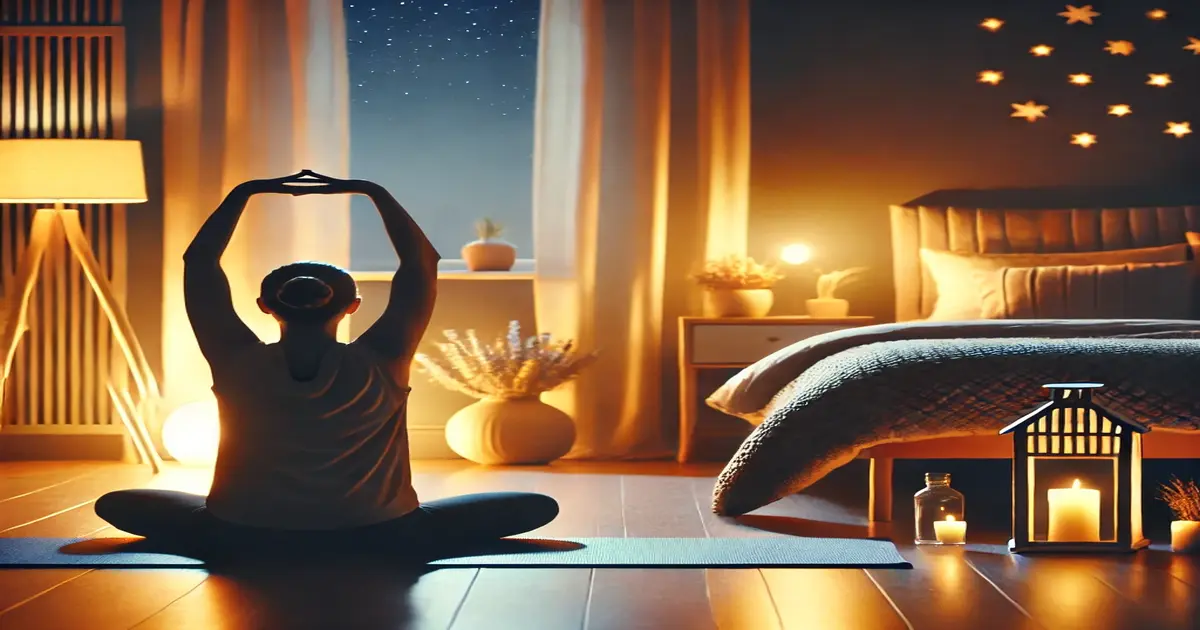Listen This Article-
In the fast-paced life many Americans lead, quality sleep can be elusive. With increasing stress, screen time and daily pressures, achieving restorative sleep has become a challenge for many. Yoga, an ancient practice rooted in mindfulness and relaxation, is gaining popularity as a natural remedy for sleep optimization. Through a combination of physical postures, breathwork and meditation, yoga can calm the mind, reduce tension and prepare the body for deep, restful sleep.
1. How Yoga Improves Sleep
Yoga promotes relaxation by activating the parasympathetic nervous system, often called the “rest and digest” system, which helps the body wind down and prepare for sleep. By focusing on deep breathing and gentle movement, yoga reduces cortisol levels (the body’s stress hormone), which can interfere with sleep. In addition to calming the mind, yoga also helps relieve physical tension, especially in the neck, shoulders and lower back—common areas of discomfort that can disrupt sleep.
Yoga practices like Restorative Yoga, Yin Yoga and Hatha Yoga are particularly effective for sleep optimization. These styles focus on slow, deliberate movements and long-held postures, encouraging the body to relax into the poses and release built-up stress.
2. Best Yoga Poses for Better Sleep
Certain yoga poses are specifically beneficial for improving sleep quality. These poses help relax the body, release tension and prepare the mind for rest:
- Legs-Up-the-Wall Pose (Viparita Karani): This inversion helps relax the lower body, reduces swelling in the legs and calms the nervous system, making it an ideal pose for winding down.
- Child’s Pose (Balasana): A comforting, grounding pose that stretches the back and gently compresses the abdomen, promoting a sense of safety and relaxation.
- Reclining Bound Angle Pose (Supta Baddha Konasana): This restorative pose opens the hips and chest, helping release tension from the lower body and allowing for deeper breathing.
- Supine Spinal Twist (Supta Matsyendrasana): Twisting poses help detoxify the body, release tension in the spine and promote relaxation before sleep.
- Corpse Pose (Savasana): The ultimate relaxation pose, Savasana helps the body fully relax by focusing on breath and stillness. It’s often used at the end of yoga practice to allow the body to absorb the benefits of the session.
Incorporating these poses into a nightly routine can create a sense of calm and signal to the body that it’s time to rest.
3. Breathwork and Meditation for Sleep
Yoga isn’t just about the physical poses—it also emphasizes the importance of breathwork or Pranayama, to optimize sleep. Deep, controlled breathing helps reduce anxiety, lower blood pressure and promote relaxation. A few techniques that are particularly effective for sleep include:
- 4-7-8 Breathing: Inhale through your nose for 4 seconds, hold for 7 seconds and exhale slowly for 8 seconds. This practice helps calm the nervous system and slow the heart rate, preparing you for sleep.
- Alternate Nostril Breathing (Nadi Shodhana): This technique balances the mind and body, helping to reduce stress and promote tranquility.
Combining these breathing techniques with mindfulness meditation can also train the mind to let go of racing thoughts, a common barrier to falling asleep.
4. Creating a Nighttime Yoga Routine
For optimal sleep, consider practicing yoga in the evening, about 30 minutes to an hour before bed. A simple routine of 15-20 minutes can be enough to calm the mind and relax the body. Set a calming atmosphere with dim lighting, soft music and perhaps some essential oils like lavender, known for its soothing properties.
Conclusion: Yoga as a Sleep Aid
Yoga offers a holistic approach to improving sleep quality, addressing both physical and mental stressors that can interfere with a good night’s rest. By incorporating gentle poses, breathwork and meditation into your evening routine, you can optimize your sleep naturally and wake up feeling more refreshed and rejuvenated.
